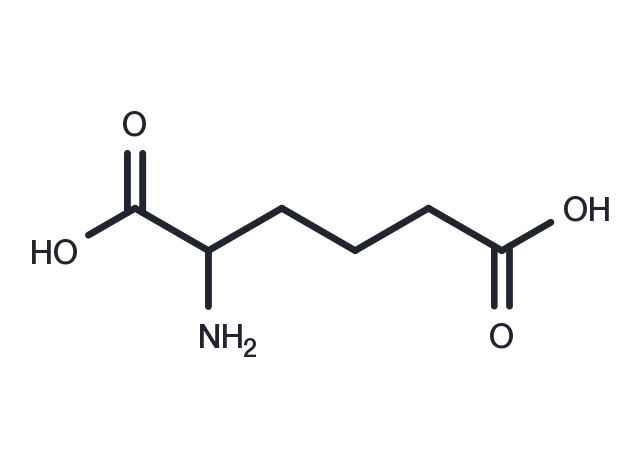Powder: -20°C for 3 years | In solvent: -80°C for 1 year


Aminoadipic acid (DL-2-Aminoadipic acid) (2-aminoadipate) is a metabolite in the principal biochemical pathway of lysine. It is an intermediate in the metabolism (i.e. breakdown or degradation) of lysine and saccharopine. It antagonizes neuroexcitatory activity modulated by the glutamate receptor N-methyl-D-aspartate (NMDA). Aminoadipic acid has also been shown to inhibit the production of kynurenic acid, a broad spectrum excitatory amino acid receptor antagonist, in brain tissue slices.

| Pack Size | Availability | Price/USD | Quantity |
|---|---|---|---|
| 500 mg | In stock | $ 42.00 | |
| 1 g | In stock | $ 74.00 | |
| 1 mL * 10 mM (in H2O) | In stock | $ 46.00 |



| Description | Aminoadipic acid (DL-2-Aminoadipic acid) (2-aminoadipate) is a metabolite in the principal biochemical pathway of lysine. It is an intermediate in the metabolism (i.e. breakdown or degradation) of lysine and saccharopine. It antagonizes neuroexcitatory activity modulated by the glutamate receptor N-methyl-D-aspartate (NMDA). Aminoadipic acid has also been shown to inhibit the production of kynurenic acid, a broad spectrum excitatory amino acid receptor antagonist, in brain tissue slices. |
| Synonyms | DL-2-Aminoadipic acid |
| Molecular Weight | 161.16 |
| Formula | C6H11NO4 |
| CAS No. | 542-32-5 |
Powder: -20°C for 3 years | In solvent: -80°C for 1 year
DMSO: Insoluble
H2O: 10 mM
You can also refer to dose conversion for different animals. More
bottom
Please see Inhibitor Handling Instructions for more frequently ask questions. Topics include: how to prepare stock solutions, how to store products, and cautions on cell-based assays & animal experiments, etc.
Aminoadipic acid 542-32-5 Metabolism Others Endogenous Metabolite inhibit Inhibitor DL-2-Aminoadipic acid inhibitor
